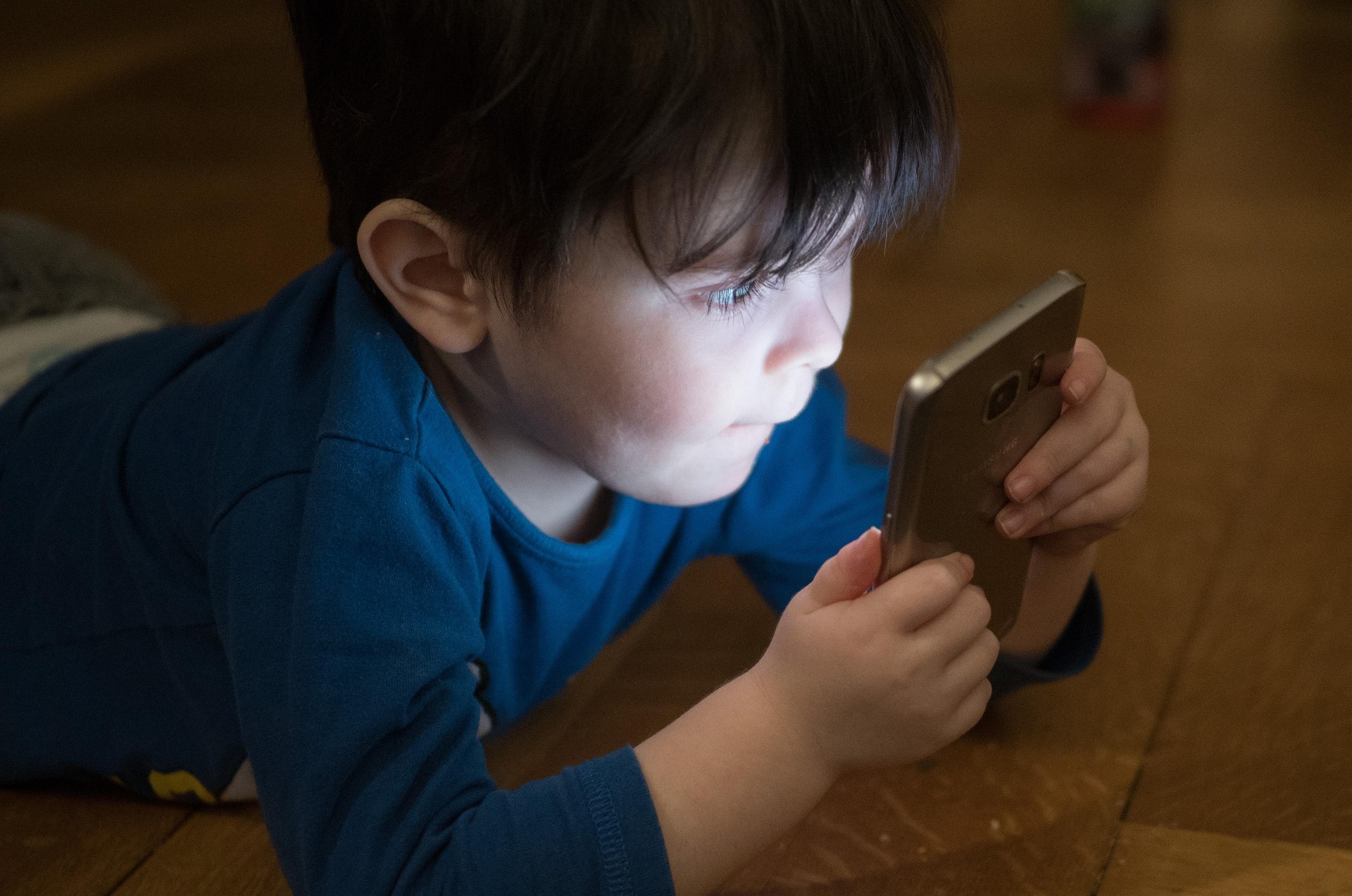The good, the bad and the possibly ugly things you may not want to know…
In recent times the explosion of Smart devices, social media and educational technology aids has brought the issue of screen time for children into sharp focus and there is a lot of hype about both the drive for a technology enabled classroom and the potential “evils” of screen time for children, understandably so given the lack of hard data, but do the hard facts actually match the hype?

This article is aimed at providing educational insight into where the current research stands and is not intended to be recommendation or advice; readers should do their own research, seek advice where necessary, and make their own decisions accordingly.
Further, this article will explain the rationale for the Purple Dragon Early Years guidance on use of technology in the preschool setting based on the available research rather than the hype… This guidance is used in our lesson plan creation and delivery and our staff are mandated to follow it. In line with our commitment to incorporating emerging research into our methodology, Purple Dragon reserves the right to update such guidance as more relevant research becomes available, which we track on a regular basis.
This is a highly complex and technical subject and, as such, is difficult to boil down into sound-bites, which is what causes the problem with the media hype. Therefore, this article will go step-by-step through each element contained in the research reviews we have studied with number references to show which source is being referred to (you will find a short list of sources studied for this piece in the reference section at the end).
Summary of key messages (if you don’t have time to read the whole article):
- Despite the decades of screen devices and content being available to children, very little solid research has been conducted on impacts (good and bad). There is evidence of educational and engagement benefits but also evidence of developmental issues associated with 1) extreme overuse; 2) poor parental controls and 3) inappropriate content. However, except for extreme durations (7 hours per day), there is no causal link between screen time and development issues, rather, other factors appear to be more negatively impactful than screen time alone. This is a vital piece of knowledge to bear in mind as you consider the issues!
- Very young children cannot easily transfer concepts and information from a screen to real life and so MUST have caregiver direct involvement in any screen time. As they grow, a little more freedom to explore by themselves can be introduced, especially with interactive devices and content. Children under age 1 are easily mesmerised by screen content but cannot understand it and should not be exposed to screens at all. This conclusion, at least, seems universally supported by the research.
- Exposure to background screens (being used by others) and technoference are far greater disruptors of childhood development than active, monitored screen usage for educational purposes. Technoference is defined as interruption of everyday interpersonal interactions between children and parents, and disruption of total amount of time spent together, that occurs due to use of digital and mobile technology devices by parents. This is because it disrupts the caregiver-child interactions vital for psychological growth and early learning; exposes the children to inappropriate content and also leads to acting out and behavioural issues.
- “Parent-Child interactions…form the foundational building blocks of a complex neurobiological framework that influences emotional and cognitive functioning throughout an individual’s life. These early interactions between parents and children are critical for the development of neural circuits that govern emotional regulation, social behavior, and cognitive processes (Belsky and De Haan, 2011; Mariani Wigley et al., 2022).”
- Well-designed, age-appropriate content with specific educational goals can provide an additional route to early language and literacy for children. Note: it is not a replacement for traditional caregiver – child time but rather additional time. However, watch out for content created to attract attention (“eyeballs”) rather than educate. And advertisements are very bad indeed! Once again, the key finding is that Early Years children MUST be accompanied while watching even educational content made for their age group to ensure the messages are understood and related to the real world and, even better, blended with other topic related activities and/or physical exercise.
- Only truly extreme quantities of screen time have shown an immediate and clear impact on children (7+ hours/day) and even that is not demonstrably permanent. It seems that other factors such as background screen exposure, content quality, lack of co-watching with an adult and lack of explanation of the content and relation to the real world are more consistently present factors when developmental issues were noted. Screen time alone is not the main issue, and may not even be an issue at all. Rather how it is used and the content selected are bigger, more obvious, issues and so is adult-child disrupted interaction. That said, the consensus recommendations for screen time are: to only start from 18-24 months and keep it to 1 hour per day maximum (although it is not clear whether this is pure recreational over and above educational or in total).
- Limitations of the current research, that impairs clear conclusion, include: insufficient quantity of research; insufficient quality (too many survey-based studies, therefore subject to inaccuracy); a lack of interrelation between different factors (assessing individual risks in isolation of other factors, which is not how it works in the real world); insufficient wider activity information on children in studies (what else are they doing that may mitigate or influence risks?). There may also be a culture of distrusting caregivers/parents to act appropriately and thus erring on the side of banning screen time to avoid other factors in study conclusions.
- Only when all other negative factors are removed can we possibly assess the pure impact of correctly administered screen time alone. The immediate action is clear; remove all the other negative factors but don’t “throw the baby out with the bath water”, properly used screen time can offer significant benefits.
- The Purple Dragon policy is to use a small amount of educational screen time only when it enhances the teacher led lessons and activities and keep total screen time below 1 hour/day. We only use centrally approved (by Director of curriculum) content integrated into lesson plans with specific development outcomes sought. Screen time is NEVER used to pacify children.
Setting the scene
Is there any benefit to screen time for preschool aged children and is there any evidence that developmental delays can be directly attributed to screen time?
Research shows that the use of screen-based media in early childhood (5 years of age and younger) can have both positive and negative impacts on cognitive and socioemotional development[1]. [Thus we must understand the benefits and risks and make sound judgements in deciding what to do, both at home and in school settings. So an outright ban may not be the correct course of action unless the risks are too great to tolerate, depending on age.]
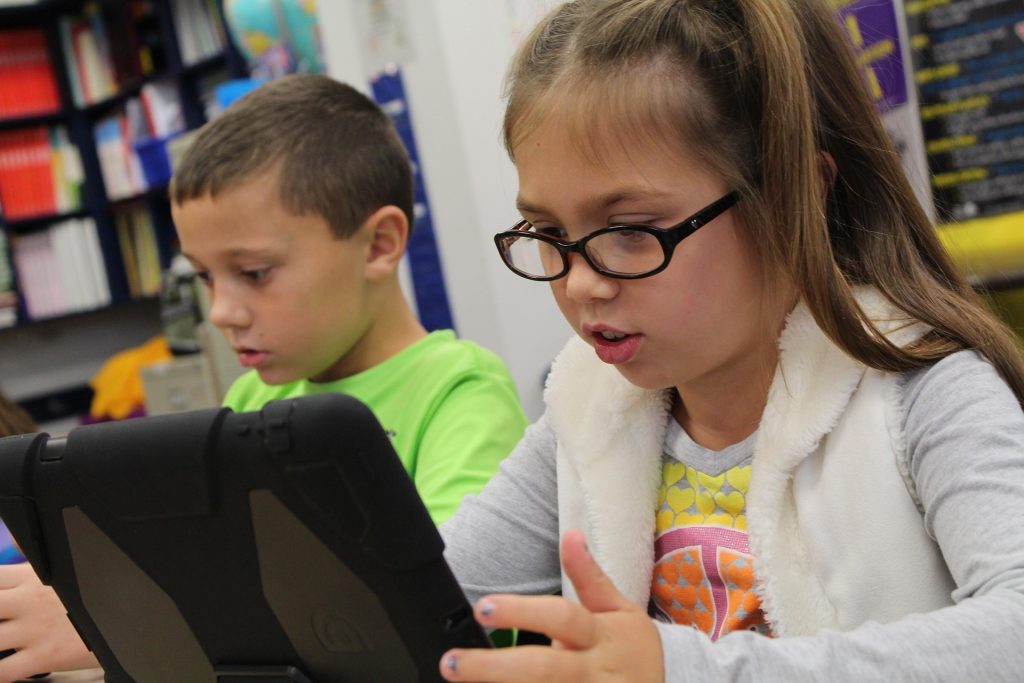
Screen-based media can affect children’s neuroplasticity, with positive experiences leading to brain changes that promote learning and enhance cognitive abilities, and poor experiences resulting in brain changes that hamper cognitive development[1]. [We need to understand which are the positive experiences and which the negative and clarify why so we may use the positives and eliminate the negatives.]
So far, studies do not show a direct causal link between “heavy” screen time (more than 2 hours per day for infants younger than 12 months) and significant developmental issues. However, there is an association that may or may not contribute to such issues but it is likely this is not the only contributing factor and may not even be the most important one. Moreover, evidence of negative effects [directly attributable to the actual screen time] is only clearly apparent when exposure to devices is extremely high (more than 7 hours per day)[2]. [Thus we must be careful attributing developmental issues to screen time alone and consider all other factors in the round, but we can accept that excessive, heavy, use at some level can be shown as negative, in terms of developmental problems, depending on age.]
The development of socioemotional abilities in childhood goes along with the development of cognitive skills. Emotion and cognition work together contributing to ability to pay attention and ability to learn. In fact each enhances and enables the other. Therefore, to understand the impact of screen-based media on children’s development, it is important to integrate cognitive and socioemotional perspectives[1]. However, most studies isolate these factors and in addition most studies are survey based, which is prone to error (e.g. lying). More actual experimental studies are needed to sort out true cause and effect and interrelationship between risk factors. [Thus, alas, we remain with limited hard data but can still make some judgements based on the available evidence and indeed must do so for the sake of our children’s wellbeing.]
There are many categories of enquiry in the available academic literature falling broadly into 3 main areas: developmental, psychosocial and physical[2]. Generally the guidance being sought as an outcome of studies are: 1) duration (how much time is ok vs bad); 2) impacts on health and wellbeing vs positive effects on development and 3) content quality (with respect to positive and negative effects)[2]. [Sifting out the key messages from the studies can be quite hard and experienced judgement is needed as the answers are not as yet, unfortunately, “black and white”.]
What is meant by screen time is not just Smart phones and tablets but also television, computers, toys with screen-based content like games consoles and also Smart watches etc. Furthermore “exposure” (an unfortunate technical term for potential impact, good as well as bad, because the word tends to have a bad connotation) includes not just active use but also being in the presence of a device being used by others[1 & 2], this will be covered in detail below and is a crucial finding not covered much in the media.
Ability of children to comprehend content on screen devices

Children younger than 2 years have limited understanding of content on 2D screens and have difficulty transferring this experience to a real 3D world[1 & 2]. By contrast, they learn intensely through face-to-face interaction with parents and caregivers [Please keep this top of mind as you read because it is crucial to understanding the risks and mitigation]. Early learning is easier, more enriching and developmentally more efficient when experienced live, interactively, in real time and space, and with real people[2]. There is some evidence that children aged 2 and over can learn better from interactive devices (e.g. Tablets) than passive devices (e.g. broadcast TV) but the issue of content regulation (making sure they don’t see inappropriate content and advertisements) can be harder to mitigate on interactive devices[2]. [One thing is evidently true from the studies, if using media devices young children should not be left to do so alone, rather they must have an active co-participant adult to guide and explain matters as necessary.
This is to achieve both content regulation and to address likely mistranslation or misunderstanding of the 2D experience into real life settings.]
Early age of onset of screen media exposure may lead to decreased preschool cognitive performance, e.g. weaker executive function (a set of mental processes that manage and control other cognitive abilities and behaviours) or attention difficulties [note: 4 month old children were used in this study!]. Results showed that screen exposure at 4 months was negatively associated with inhibition at 14 months of age. However, no relation between screen-based media use and either working memory or cognitive flexibility was observed[1]. It is clear that there is a minimum age before which screen use is not beneficial but long-lasting development issues have not been identified in this study and the headline statement is limited to very young infants (less than 12 months old). It is probably reasonable to conclude, already at this point in our review, that under age 1 no screen time should be used.
Background screen exposure & “Technoference”
Studies have found that children, even younger than 24 months, may be under the influence of 5-6 hours of background screen time[1]. This is time when screens they are not actively watching are on for other uses (e.g. by older children or adults). Children’s attention is often misdirected to this background screen activity, distracting them from play or other beneficial activities.
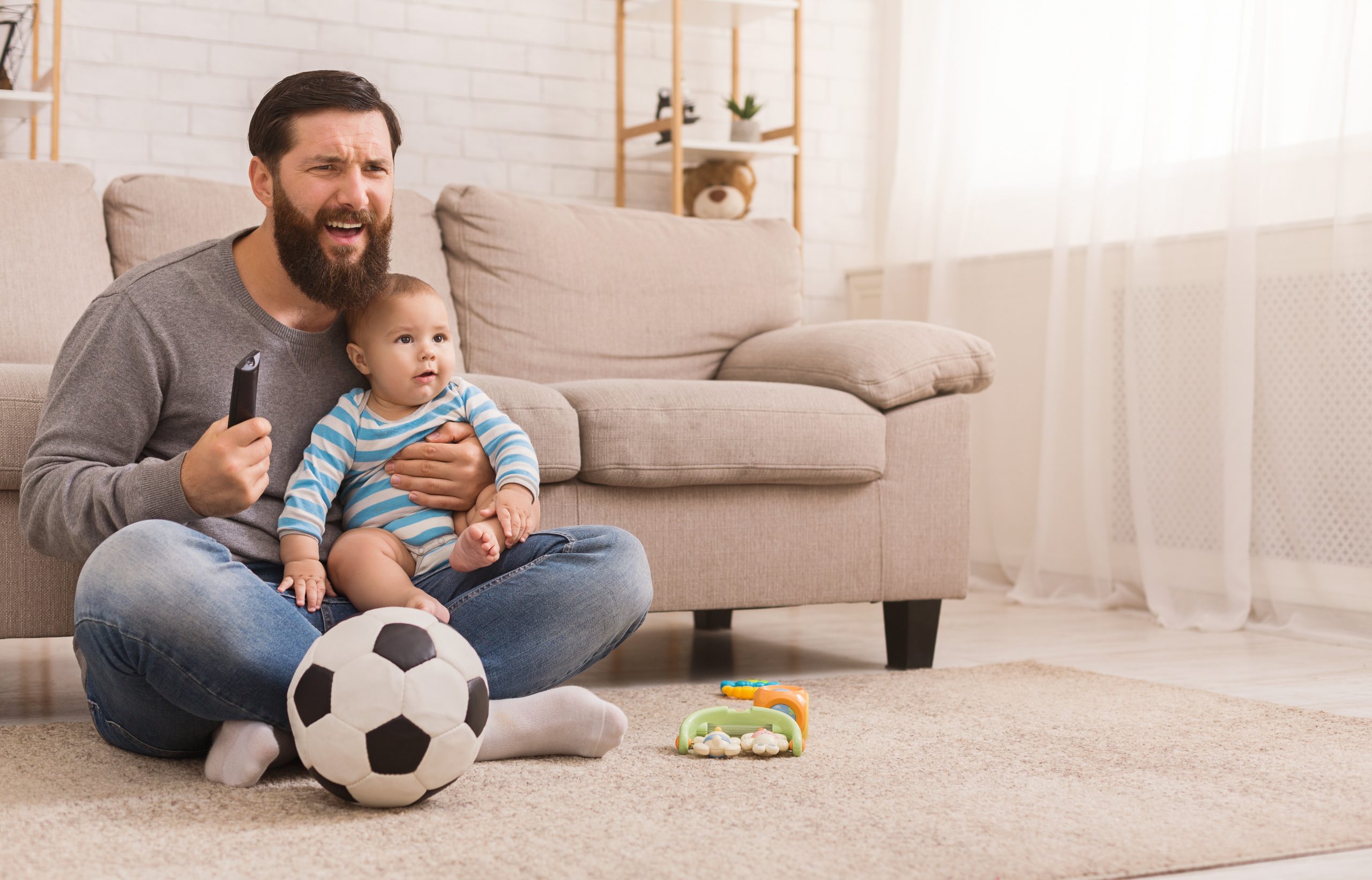
However, because children don’t understand the content it doesn’t hold their attention thus resulting in their focus flipping back and forth between what they are doing and the background screens, which disrupts brain pathway development. This is also an issue when a parent or caregiver attending to a child is distracted by the screens as it interrupts the interaction with the child and inhibits the child’s learning retention capability. Both cases disrupt cognitive processing and can negatively affect vocabulary acquisition. Furthermore, it often exposes them to unsuitable content they cannot process adequately and this can lead to problems with social behavior and emotional regulation.
High exposure to background TV has been found to negatively affect language use & acquisition; attention; cognitive development and executive function in children younger than 5 years. Crucially, it also reduces the amount and quality of parent–child interaction and distracts from play based activities, which have been shown to be vital for early years development[2]. [The action is obvious; you don’t need a PhD for this one! Turn off all screens in the area where Early Years aged children are engaged in play or reading, with or without caregiver/parent present AND when engaged with children, turn off your phones as much as possible to avoid distraction disruption. Screens should only be on when the caregiver is actively working on a topic on screen with the child or the child is working through an interactive exercise.]
Studies also note that where parents and children watch TV together their communication is less frequent than when reading a book or playing. [Thus TV watching together should be an add on and not a substitute for physical, real world play and story time.]

Technoference is everyday interruption of interpersonal interactions or time spent together that occurs due to digital and mobile technology devices[1]. Heavy use of digital technologies by parents, such as mobile devices, can lead to poorer verbal and non-verbal parent-child interactions. Such interactions are crucial for children’s optimal cognitive and socioemotional development.
When highly occupied with mobile devices, parents do not respond efficiently [nor effectively] to their children’s needs, and reciprocal social interactions with their children are disturbed. These interactions are a primary socialization mechanism for the development of attention skills and if they are disturbed, children are losing a vital opportunity to practice emerging focused attention abilities[1] at a vital moment in the child’s development.
Studies confirm a strong association between parent screen time and that of their children, raising concerns that increasing media presence is displacing quality (face-to-face) parent–child and family interactions. A study of smartphone use in fast-food restaurants observed that as time spent by parents on their phones increased, so too did the likelihood of children acting-out to gain attention, often leading to negative interactions[2]. [Indeed, in our experience, acting out is a sure sign that children are not getting sufficient parental attention and is a big warning sign of a disruption to healthy early years development. There is a limit to how much pre-school can offset such a deficiency and should not be expected to do so.]
Furthermore, children learn through observing adults and mimicry. They will pick up on excessive use of technology as a cue to do the same and thus be attracted to use devices, even if they are prohibited from doing so when young, indeed they will mimic most adult behaviour…
[This lack of attention and time with parents can lead to antisocial acting out, insecurity, anxiety and withdrawal in other settings such as school and is a precursor for later heavy usage of screen-based devices. The study authors generally recommended that caregivers act as positive role models for their children by switching off devices as much as possible during social family time and diverting attention away from devices when their children seek to interact with them.]
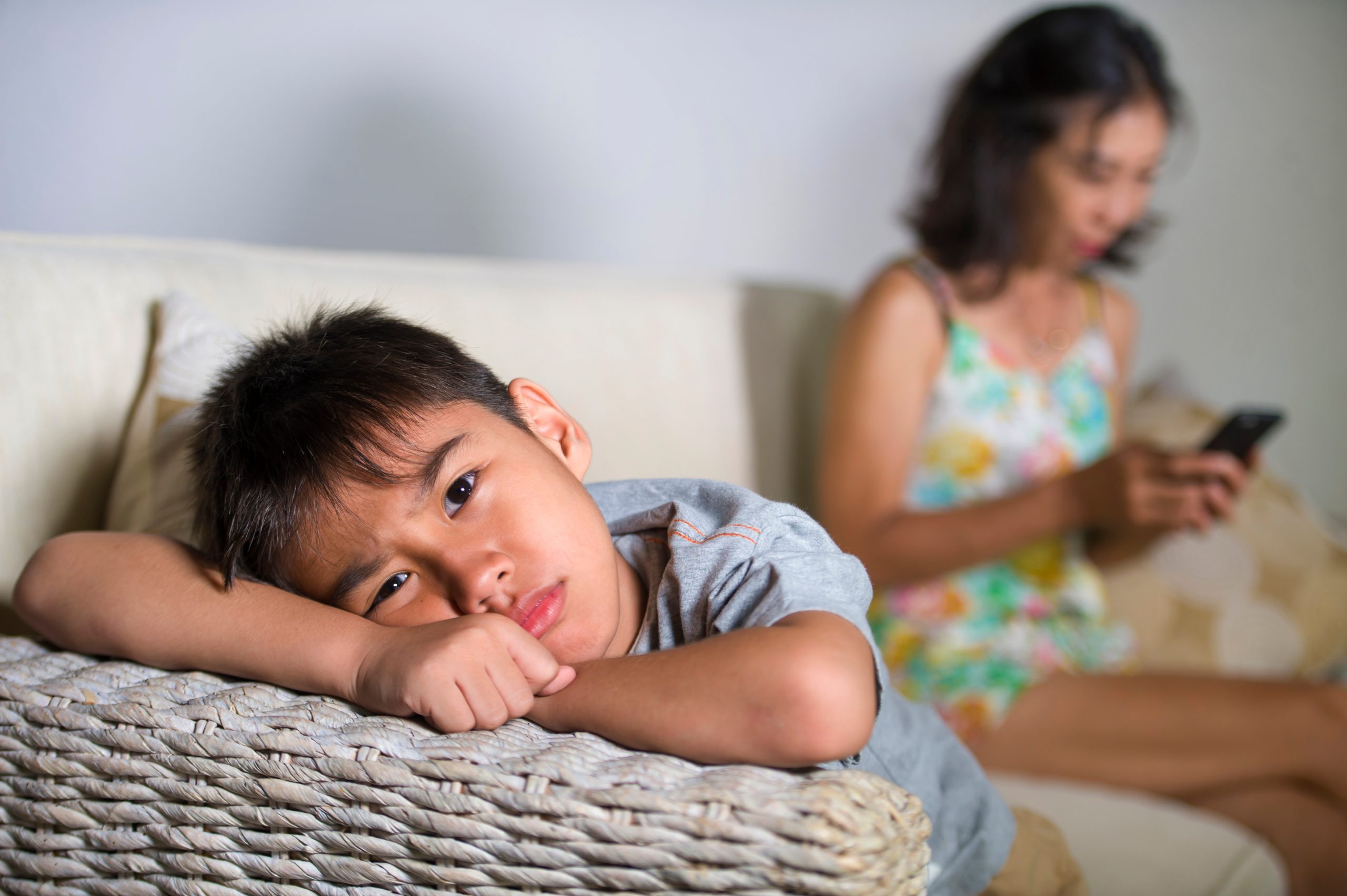
[In other words, prioritise your children in the moment they seek your attention.]
Media content type and quality issues

Well-designed, age-appropriate content with specific educational goals can provide an additional route to early language and literacy for children. However, while screens may help with language learning when quality content is co-viewed and discussed with a parent or caregiver, preschoolers learn best (i.e. in expressive and vocabulary terms) from live, direct and dynamic interactions with caregivers[2].
[Use of screen-based media must be an additional enhancing aspect of development and not a replacement for personal interaction and hands on play-based activity.]
But beware, content made for children can have inbuilt stimulation triggers, such as rapid pacing or atypical scene changes, which may be harmful for cognition, behaviour and executive function. Studies have shown that watching only 9 minutes of content such as [fast paced] cartoons had immediate negative effects on executive function versus educational content or book reading. This is due to causing exhaustion of the child’s ability to process the content[1]. Furthermore, watching content with commercials may be even more detrimental.
While images, bright colours and cheerful music can enhance a child’s understanding and perception of content, too much of this can also result in over stimulation, and therefore inability to correctly process the content in the brain. [Thus careful curation of content types that focus on appropriately paced and duration educational material and avoidance of Ad based Apps and Ad based TV is important. The type of content matters and so does the delivery service utilised (e.g. YouTube can be fine but get a family subscription to eliminate ads. Streaming services such a Netflix with children only spaces is more controllable than adult focused TV broadcasting with Ads).]
Prosocial vs antisocial content is that which seeks to teach children good vs bad behaviour, ethics and social conscience through social and emotional learning[1]. However, children (especially under age 2) may not understand the message and may be confused as to which behaviour being shown is appropriate (i.e. the good or the bad). [Such content must be used with the caregiver narrating the scene and clarifying and reinforcing the message through interactions. This is also true for books covering this topic, so the medium is not the issue, but in the case of books young children cannot read so adult interaction is guaranteed.]
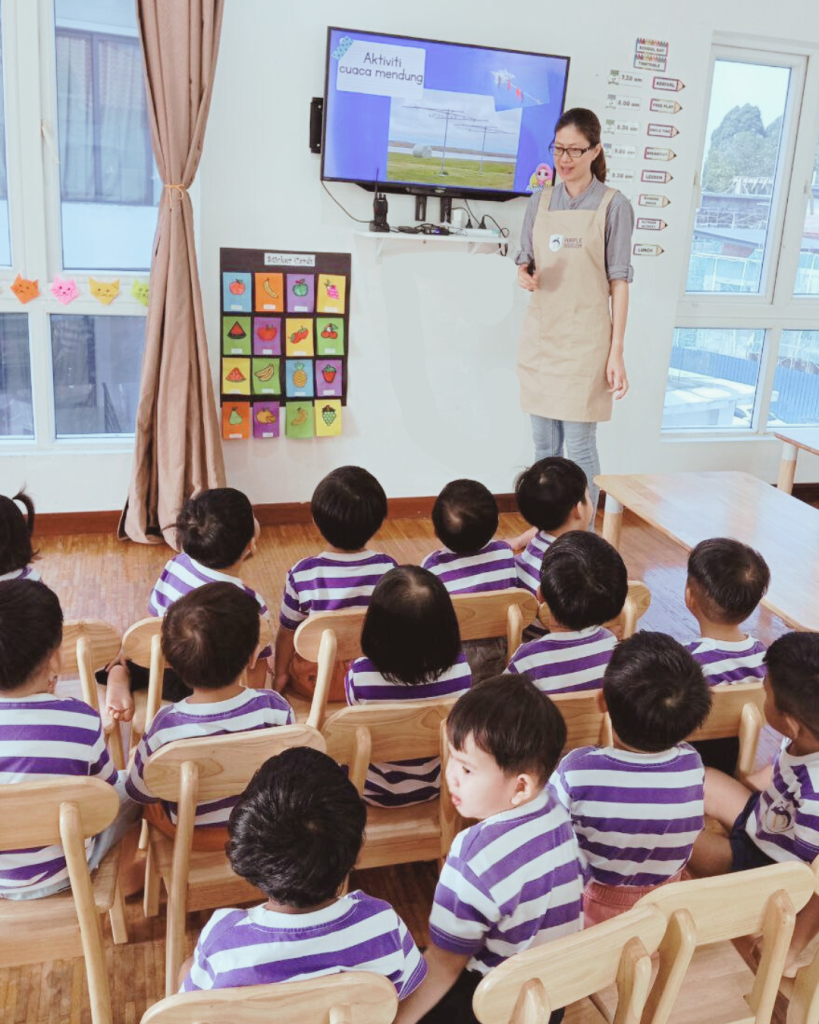
While quality educational programming is a leading mitigator of psychosocial risk on any screen, studies show that children’s access to and choice of optimal content peaks early: at 2 to 4 years old. As children age, they are more likely to view entertainment programming as a preference[2]. [Thus the optimal time for using educational content is younger than 4 years of age and if trained on using content for education this may be easier to carry over into later years but if not it is likely that educational content will be displaced by entertainment preferences.]
Children’s screen time does not have to be passive; digital media use can encourage and complement physical activity. Especially after age 3, children respond to activity-based programming when it is fun, designed for them and encourages imitation or participation. Quality content connects on-screen with off-screen experiences, fosters engagement with caregivers and peers and supports active, imaginative play[2]. Thus when content is used as part of a wider physical based activity or educational exercise better results are achieved. Content that encourages children to get up and moving in response to the media is great for physical development needs.
Media use duration (Hours per day)
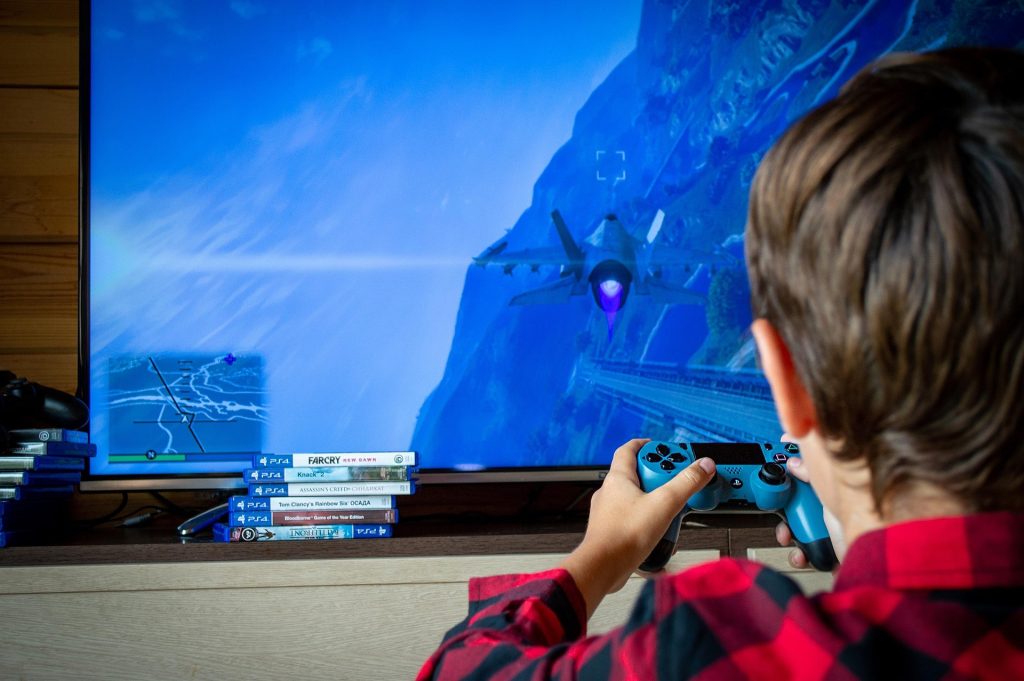
“Research findings on an association between screen time and problems with attention are mixed.”[1]. One study showed exposure to more than two hours of screen time [per day] was associated with an increased risk of lack of attention problems. Another study investigating associations between screen time and problems with attention over time, showed that there is almost no association between television watching during toddlerhood and attention problems later.
Minor attention difficulties were observed only for children who watched over 7 hours of television [per day]. These findings suggest that exposure to television in early childhood may be detrimental to attention, but only at very high levels of exposure, so we could speculate that something else is going on where developmental issues emerge.
Another review study quoted “Excessive TV viewing (more than 2 hours/day) has been clearly associated with early childhood self-regulation difficulties.” However, the review went on to state, “Research shows that excessive levels of screen media exposure are associated more strongly with low levels of stimulation in the home and low parental involvement than with socioeconomic position”[2]. [Thus, again, it is not clear if it is the screen time that is the chief issue here or the lack of parental/caregiver engagement… Most studies seem to concur that higher screen time results in lower parental/caregiver interaction with children and THIS is an important contributor to developmental issues but they are not explicit on which is the chief driver. Generally, most practitioners would conclude that time with parents is crucial regardless of screen time, and the neuroscience concurs with this, so we must start with what is known for sure.]
It was noted in studies that children with developmental delays tend to spend more time viewing screens than those without, however it is not clear whether this is because of the developmental delays or a cause of/contributor to them[1]. [Note, in the main, these studies do not cover children with diagnosed developmental issues BUT we ARE left wondering if the rise in ADHD diagnosis has anything to do with technoference and background screen time..? Food for thought!]
General observations by the author of this piece from the studies and articles reviewed
1) Children younger than 5 years old require active play and quality family time to develop essential life skills, such as language, self-regulation and creative thinking. Regardless of age, children should not have to compete with screens for parental or caregiver attention[2]. Nor suffer lack of play and outdoor time as a result of screen usage.

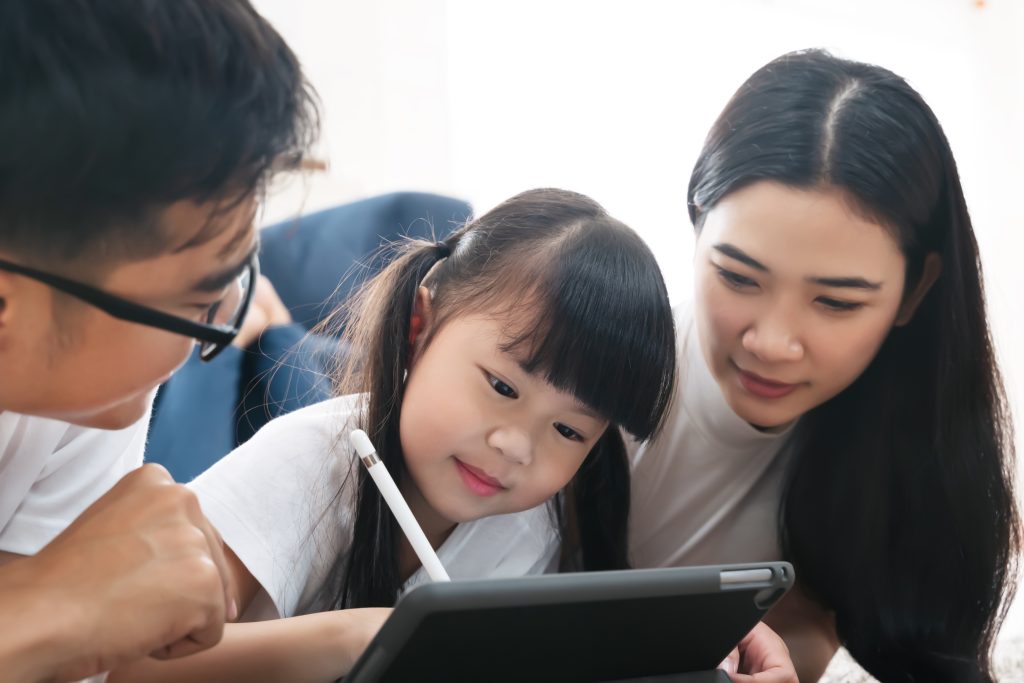
2) For children under the age of five, exposure to screens can pose risks and offer some benefits. For children younger than two years there is a video deficit effect, such that young children are not able to form links between what they see on a screen and reality and therefore to acquire new knowledge from screens, they need proper guidance from their caregivers to do so[1] [2]. They must not view alone.
3) Excessive screen use [more than 2 hours per day]; watching inappropriate and fast-paced content; unsupervised screen exposure, and no parental involvement are disruptive to a child’s executive functions development, development of attention skills, learning and language development and parent-child interactions[1]. [There is a lot in this statement and it is hard to pick out the chief drivers but no study clearly called out screen time as the primary culprit, rather background screen exposure and technoference seem to be a greater issue. Kids need quality time with their parents!]
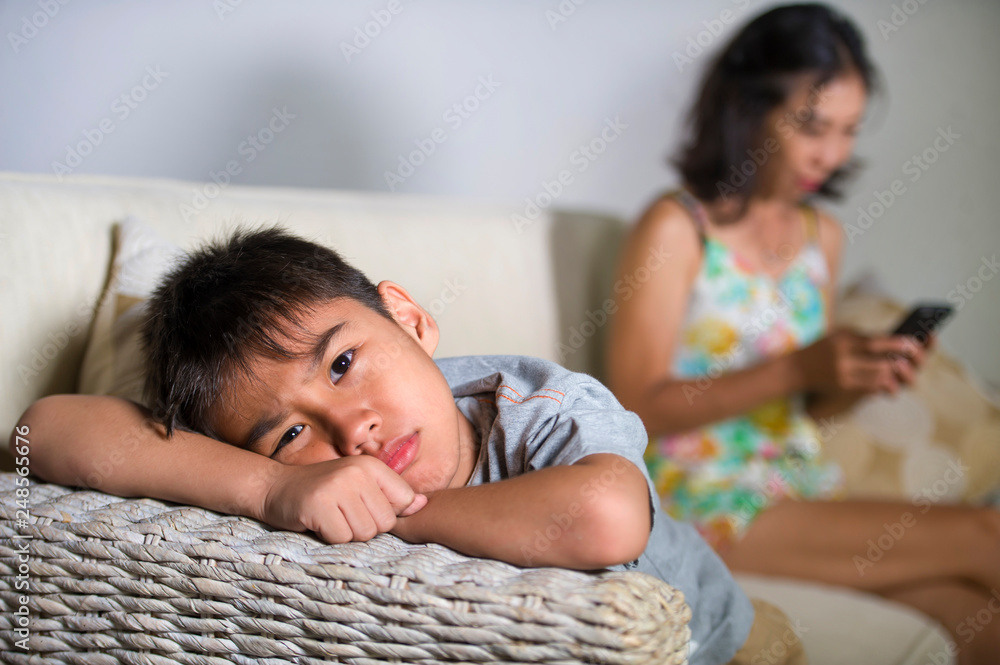
4) Evidence of an association between screen time and attentional difficulties is mixed, with negative effects only clearly apparent when exposure is extremely high (i.e., more than 7 hours/day) and these were not seen as permanent[2].
5) Background screen time and so called Technoference are key factors in developmental issues associated with screen time usage rather than active screen time with a caregiver. Furthermore, a lack of attention and time with parents can further lead to antisocial acting out, insecurity, anxiety and withdrawal in other settings such as school and is a precursor for later heavy usage of screen-based devices.

In short, limiting or prohibiting screen time that does not impact the other risk factors, may have little real positive effect and may deprive the child of positive benefits.
6) Content type must be carefully curated and controlled, favouring: high quality educational material over entertainment; and the optimal age for instilling good educational habits with regards to use of media devices is in the early years.
7) There is a general agreement that a large part of the problem with excessive screen time is displacement of personal time with parents or caregivers. Use of screen-based media must be an additional enhancing aspect of development and not a replacement for, or inhibitor of, personal interaction with trusted adults.
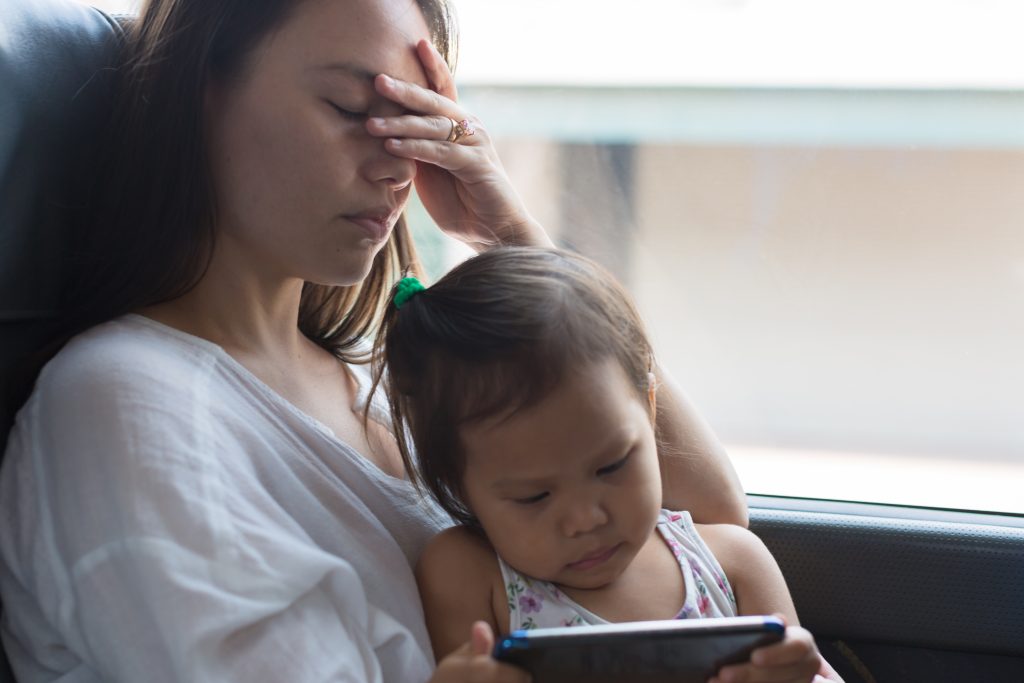

8) Video chatting (e.g. Facetime) has not been covered in this piece as it is not relevant to the preschool environment but in general the studies are supportive of this type of media usage, especially for interaction with relatives. However, again, they recommend supervision for such events to ensure the child fully understands the interactions.
9) Studies seeking to assess use of screens between the ages of 3 and 5 found that the screens themselves were not the chief contributor to negative impacts of executive function and vocabulary development but rather the active involvement of parents was crucial in such development[1].
Limitations of the studies available that impact ability to draw conclusions:
- The majority of the studies are surveys rather than actual cause and effect type work, thus prone to data inaccuracy.
- The studies, by and large, do not look at interrelations between risk factors not mitigating factors. For example, to what extent is any potential developmental issue a result of actual screen time vs background screen time vs a lack of parental interactions as a result of screen time displacement?
- Furthermore, the studies tend to assess development areas separately rather than as a combined set of interrelated areas. So we do not know the interaction between verbal development, cognitive development, socioemotional and executive function development areas from these studies. Knowing this may help us understand the risks and mechanisms of impacts and mitigation better.
- The studies did not capture other activities occupying the children during the survey or research period, such as active play, non-screen activities, physical exercise, reading, puzzles etc. It is anticipated that such data could shed light on inbuilt mitigation of any screen time risk from such activities[1]. In other words, children with a healthy balance of indoor and outdoor time, physical, academic and playtime may not be at risk from reasonable screen time at all, we do not know!
- Crucially, the causal direction of the relationship between screen-based media and a child’s cognitive and socioemotional development has yet to be established[1]. In other words, no one can prove that screen time is a direct cause of developmental issues.
- Much of the conclusion and related recommendation as regards the risk of screen time may emanate from the fact that researchers cannot be certain that caregivers and parents will adhere to the principle of active involvement and not leave the children to use devices by themselves whereas with books it is guaranteed because most children under 5 cannot yet read a book and thus prudence demands the conclusions err on the side of caution and yet the studies do suggest positive benefits for screen time so complete prohibition is not indicated, expect for under 1 year old.
Mediation strategies – actions designed to mitigate any potential risks of screen time
The conclusions would appear not to specifically attribute screen time to developmental issues, indeed only very extreme cases (7+hours/day) resulted in clearly connected issues and these were not necessarily long term in duration. Rather, the studies generally seemed to suggest that a lack of parental/caregiver interaction, poor role model behaviour by adults and background screen time (including exposure to inappropriate content) constitute a greater risk than actual active screen time, especially high-quality educational content, when combined with active adult interaction.

- Parents and caregivers should assess the environment the children are in and modify their own actions and behaviours to minimize or ideally eliminate background screen time and especially any inappropriate content.
- Parents and caregivers must ensure media devices do not displace social interaction and opportunities for play and the ability for children to learn by observing and interacting with the important adults in their early years lives. Furthermore, they must make time for traditional interactions like play and reading. Where screens are used at home, parents must co-watch and interact with their early years children to ensure appropriate lessons are learned and content is of the right quality.
- Possible negative effects of screen-based media exposure can be reduced by exposing children to carefully selected content with features that are appropriate to their age and cognitive abilities. Specifically, content that will actively engage children, contain visual and auditory cues, not cause over taxing of their ability to process the information (i.e. not too fast paced) and are not interrupted by commercials, can facilitate learning and be beneficial to working memory and attention skills.
- Screen time for early years children should always be under direct interactive supervision and, where possible, connected to physical and other activities related to the screen time topics.
- Most authors declare an abolition of screen time for children under 18 months; some say 2 years but there is no hard evidence for this cutoff. Between 12 and 18 months children are generally not that interested in screens anyway but infants younger than that can get mesmerised by screens due to the bright colours and noises and this is to be avoided. No screen exposure under age 1.
- Recommendation on screen time for children between 2 and 5 years of age vary but generally seem to land around 1 hour per day and not to exceed 2 hours per day. However, some say 3 hours at weekends is ok and some specifically stipulate non educational time in their limits, suggesting that educational time is in excess of these limits. Again, the guidance is not universal and not 100% clear. Generally, we might conclude that for preschoolers only educational content is desirable, with perhaps some entertainment introduced for ages 5-6.
- Screen time should NOT be used as a means to calm children, by association, although not specifically stated in any of the studies but consistent with other educational research, it should not be used as a reward either.
- Some studies do suggest avoiding screen time at least 1 hour before bedtime to reduce the risk of melatonin suppressing effects of blue screen (and stimulation of the content itself). Melatonin is a vital hormone for sleep and the negative impact of sleep disruption is well researched. But again, the most important factor is ensuring children get sufficient sleep, roughly 12 hours a night for preschool aged children who take no naps.
The Purple Dragon Early Years approach

The Purple Dragon approach is rooted in our research-based methodology on all topics relevant to education and neuroscience development in early years children and this topic is no exception. We seek to harness the benefits of technology for positive development of the children in our care and to mitigate, as close as possible, to zero any risks. As the causal effect of such risks is not proven to be the screen time itself and the benefits are, we believe, significant, we do not prohibit the use of screen in our preschools.
We carefully curate high quality content and build into our lesson plans, centrally, only material that is appropriate to the educational or developmental area that the lesson is designed to target. This includes songs with actions, explainer videos where the mechanism within the content enhances the teacher led instruction, and video books where the teacher reads the text so that the children can see the pictures and text more clearly than on a small sized book, which we do also use, of course.
Typically, the duration of any video piece is about 5 minutes +/- after which the rest of the 30-minute lesson is without screens and about applying any screen learning to the physical real-world setting. Sometimes we use a piece of screen content to introduce a topic; sometimes we use it as a summary; sometimes we use a song as a means to aid memory (e.g. the planets song) or to learn actions.
Generally, screens are not used during the daycare phase (after nap) in nursery stage, except for dismissal time while holding the children pending parental pick up. Such content is previously viewed and educational in nature, focusing on areas like numbers, alphabet phonics and words, learning about colours etc. Furthermore, such content is co-viewed by staff who ensure a high-quality engagement with the content is achieved through constant interaction with the children. Full day duration is less than 1 hour of educational content, and often only about 30 minutes in total.
[Here our Purple Dragon teacher is talking the children through an English alphabet phonics video produced by the BBC to aid correct pronunciation.]
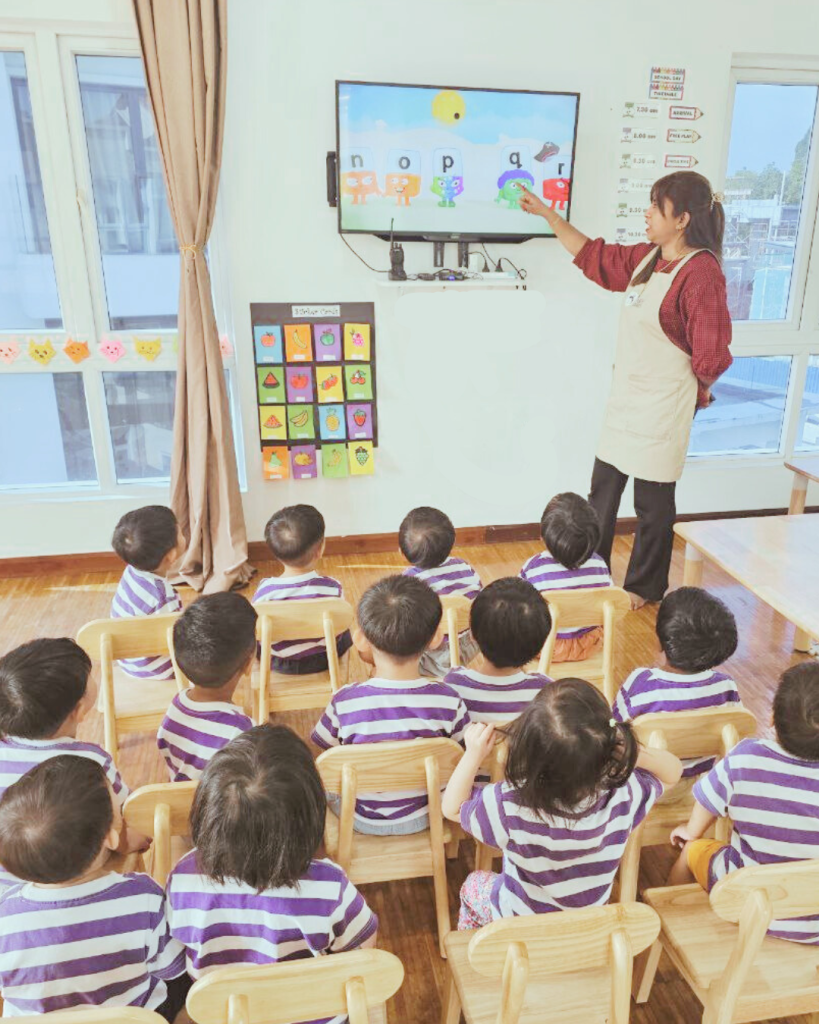
Our staff have been given clear guidance, which they must not deviate from including, but not limited to:
- Only content centrally approved by the Director of curriculum can be used.
- Only content curated in the lesson plans can be used during specific lessons.
- Content must be woven into the full 30-minute lesson to relate it to the physical world and stimulate associated hands-on and physical learning activities.
- Teachers and carers must actively view the content with children and explain the messages; interact by asking questions to ensure correct understanding; and practicing what they have learned with physical and academic activities.
- Children must not be left to watch even approved content without active engagement and supervision by staff.
- Children will never be pacified with video content nor is it used as a reward system.
- Currently, we do not use interactive content via phone or tablet.
References
(Note: all of the references generally agree, some differ in terms of recommendation. All have been studies and contribute to the piece, even if not specifically referenced.)
- Elsevier Science Direct Journal: Young children and screen=based media: The impact on cognitive and socioemotional development and the importance of parental mediation [2023] https://www.sciencedirect.com/science/article/pii/S0885201423000242
- US National Institute of Health (“NIH”): Screen time and young children: Promoting health and development in a digital world – 9-10-2017 https://pmc.ncbi.nlm.nih.gov/articles/PMC5823000/
- Effects of Excessive screen time on child development: an Updated Review and Strategies for management [2023] https://pmc.ncbi.nlm.nih.gov/articles/PMC10353947/
- Screen-based media and young children: Review and recommendations a Malaysian based review https://pmc.ncbi.nlm.nih.gov/articles/PMC8346754
- Screen time guideline for children – GlenEagles hospital KL [2024]
https://gleneagles.com.my/health-digest/children-screen-time-guideline - What is too much screen time for kids? [2022]
https://health.clevelandclinic.org/how-screen-time-can-slow-your-childs-development

